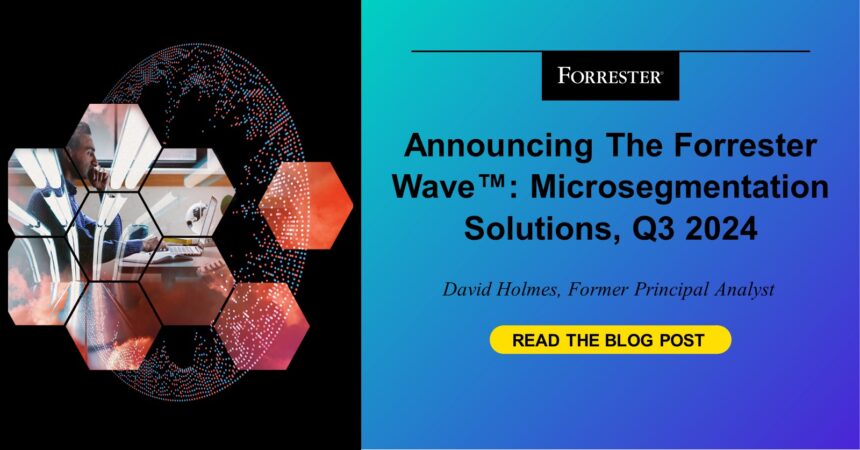Forrester just published the second edition of The Forrester Wave™: Microsegmentation Solutions. Just over two years separates this research from the previous report, and the technological advances over that short time are stunning.
The previous evaluation, The Forrester New Wave™: Microsegmentation, Q1 2022 was all about layer 3 microsegmentation in a data center (or private cloud) environment. Then, you only had two approaches to choose from:
- Software (agents)
- Infrastructure (switches and hypervisors).
Microsegment everything, everywhere, by network, workload and identity
But today, enterprises are microsegmenting these different environments in a much more sophisticated fashion:
- Public cloud workloads (in 4 or more hyperscalers)
- Microservices, in both public cloud and on-premises
- OT and IoT
- Healthcare
- Data center / private cloud (still primary use cases)
Instead of just static, layer 3 network rules, vendors have added all ports and protocols (layer 4), user and machine identities (layer 7), process-level metadata and even EDR risk scores to microsegmentation policy.
These new, responsive and dynamic security policies support bangin’ features like auto-quarantine, emergency button (mass quarantine), and live recovery during an active ransomware attack. None of that was possible two years ago, but now these features are found across multiple vendor solutions.
We’re at the Dawn of the Golden Age of Microsegmentation
What a time to be alive! The goodness doesn’t stop there. This Wave included four vendors that weren’t in the last evaluation that each a bring a fresh approach and, we think, will quickly challenge the market leaders.
Two of these vendors, Ordr and Elisity, work to succeed in microsegmentation at the network switch where previous networking solutions faltered. Their approach is well-suited to device-heavy environments like OT and healthcare.
TrueFort integrates with existing EDR agents for telemetry gathering and policy enforcement.
Zero Networks comes at the space with an entirely new approach built on remotely programming host firewalls and letting the explicit policy grow organically, through MFA approvals. Zero Networks even has policies specific to domain controllers.
Microsegmentation Leaders Are Still Leading
The vendors from the previous Wave haven’t been standing still. Illumio and Akamai Guardicore have been busy; the former adding layer 7 support and tons of features around incident response. The latter integrating ZTNA with microsegmentation. ColorTokens is focused on making its customers “breach ready.”
Meanwhile, teams at Cisco are attempting to leapfrog the whole industry with bleeding edge technology like eBPF and DPU support to realize the vision they call Hypershield.
Other Vendors Deliver Microsegmentation With Their Own Approaches
Broadcom delivers microsegmentation for virtualized environments based on its acquisition of VMware. Hewlett Packard Enterprise (HPE) provides network-based microsegmentation based on its Aruba acquisition. Hillstone Networks has two microsegmentation product offerings, one for private could virtual environments and another for container, bare-metal servers, and cloud hosts.
Read The Research; Microsegment The Things
Microsegmentation buyers have more choices than ever, and can have some confidence that these once-failure-prone projects may actually work this time. That’s great news because the demand for microsegmentation has never been higher. Microsegmentation is a frequent inquiry topic for Forrester clients.
Forrester clients can read The Forrester Wave: Microsegmentation Solutions, Q3, 2024 to find the solution that works for their environment.
This blog was written by former Forrester Principal Analyst David Holmes.








